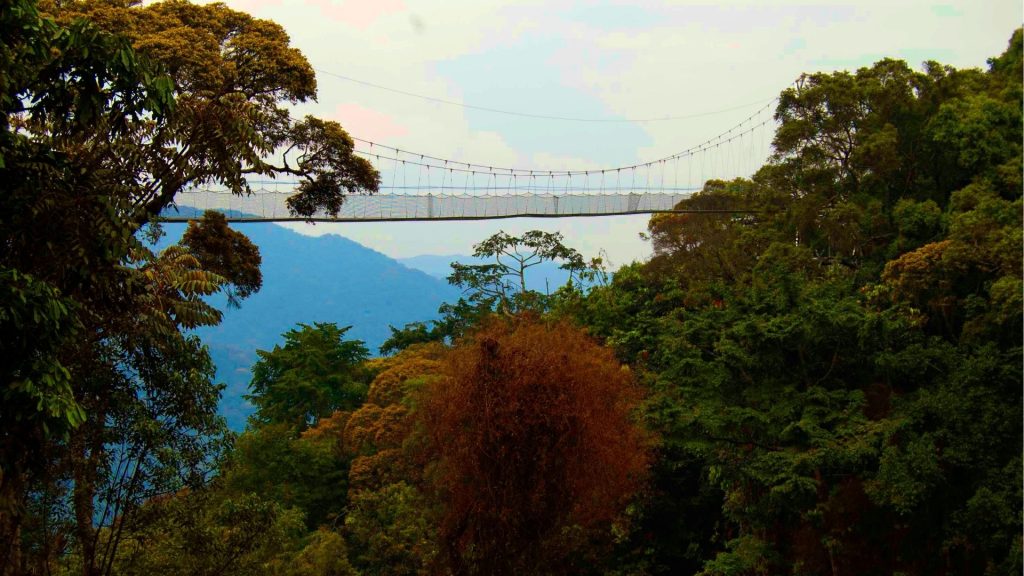
Rusizi, a Bucket List Must-Visit for Adventure Seekers
In the southwestern corner of Rwanda lies Rusizi, a district that is fast emerging as a prime tourist destination in the country. Sharing a border with both the Democratic Republic of Congo (DRC) and Burundi, Rusizi was once considered remote. Today, high-quality road infrastructure and regular flights to Kamembe International Airport mean Rusizi is as accessible as any other part of the country. Few places in Rwanda have the same lush green allure of Rusizi.
As you drive through the scenic hills of southern Rwanda, the houses get fewer and farther between, and all signs of human activity seem to fade away. Eventually, an arched overhead sign announces your arrival at Nyungwe National Park. The drive through Nyungwe gives you a front-row experience of Africa’s largest, oldest, and best-preserved Afro-Montane rainforest. With the dense forest rising up above you on either side of the road, there is a powerful feeling of being surrounded by nature.
Discover the Forest Treasures
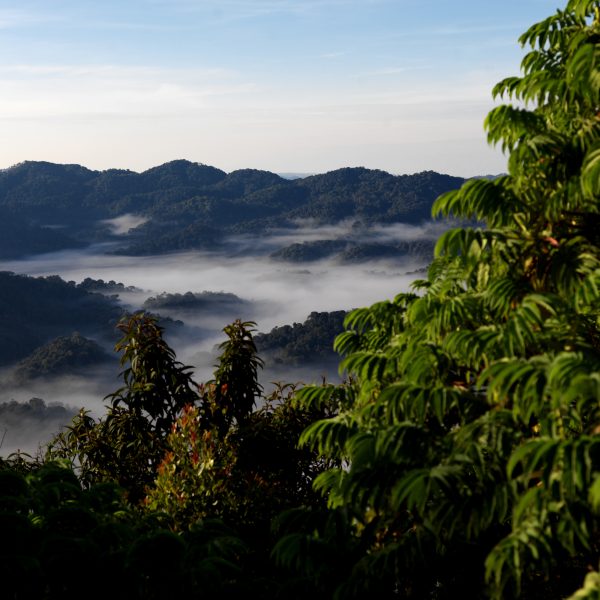
For any visitors to Rusizi, the Nyungwe National Park is a must-visit. Those in search of adventure don’t only have to admire from inside a car but have the opportunity to forge into the forest themselves. The Nyungwe National Park contains such treasures as colobus monkeys, chimpanzees, up to 310 bird species, and trees that are over centuries old. The 13 primate species that live here are impressive, comprising some 12% of all African mainland primate species, including the near-endemic L’Hoest’s monkey and eastern chimpanzee. This is why, as Habinkima Claver, the lead guide at Nyungwe National Park says, “No one ever visits Nyungwe just once. There are so many attractions that most visitors can only see a few of them on their first visit and immediately pledge to come back to see the rest.”
Visitors looking for a spectacular view of Nyungwe can take the famous “Canopy Walk”, across a 160m long suspension bridge nestled above Nyungwe’s canopy, 70m above the ground. From this vantage point, the entire forest is laid out for you, with an open view of the many birds, primates, and unique plant life. The absolute vastness, richness, and untamed nature of the forest below make this activity perfect for nature lovers and thrill-seekers alike.
Meet the Colobus Monkeys
For an up-close encounter with Nyungwe’s wildlife, visitors can embark on the famous colobus monkey trek. The black-and-white colobus monkey (Colobus guereza) is one of the most popular attractions within Nyungwe National Park. Thanks to anti-poaching and habitat protection efforts, Nyungwe’s population of colobus monkeys has recently grown to around 600, the largest ever recorded for any primate on the continent.
With the assistance of professional trackers and guides, visitors hike to the exact location where a family of colobus monkeys is expected to be. During the trek, visitors experience some of the most scenic views of Rusizi District as they walk through expansive tea plantations and into the forested areas where the colobus monkeys live.
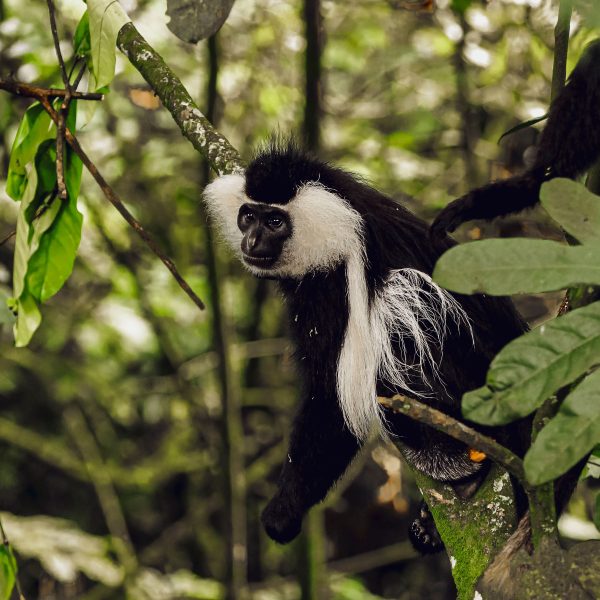
Once there, you can observe the colobus monkeys leaping from tree to tree, snacking on leaves, and playing with each other. Over the years, two groups of these charming primates have become accustomed to visitors in their natural habitat, so they remain completely unfazed by your presence. According to Oscar Mugisha, a community freelance guide, “There are no recorded cases of human-colobus monkey conflicts, and due to their diet of grass, wild fruits, and mushrooms, colobus monkeys rarely damage crops because they only consume food from the forest.”
Discover Ndambarare Waterfall
Another must-see attraction in Rusizi is the majestic Ndambarare Waterfall. The hike to Ndambarare Waterfall, which lasts about one and a half hours, takes you deep into the heart of Nyungwe Forest, revealing lots of fascinating wildlife along the way. Visitors can expect to see up close a variety of tree and plant species, and, if lucky, might come across several wildlife species, including primates and colorful birds.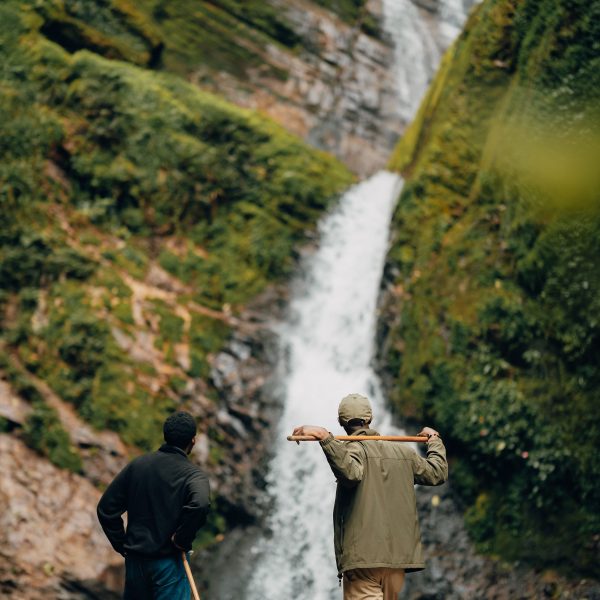
The sight at the waterfall is nothing short of breathtaking. The surrounding rainforest bursts with colors and textures, with lush, emerald-green foliage layering the landscape like a stunning tapestry. The mist from the waterfall forms delicate rainbows that shimmer with every shift of sunlight. Large curtains of water crash over the rocks, filling the air with a soothing roar and leaving all visitors in awe.
Explore Tea Plantations
Essential to Rusizi’s green identity are the numerous tea plantations that adorn the landscape. These plantations not only enhance the beauty of Rusizi but also provide vital employment for the local community, many of whom are members of tea cooperatives like the Mwaga Gisakura Tea Cooperative. “The Mwaga Gisakura Tea Cooperative was started in 1963 with funding from the European Development Fund, with the main goal of reducing poverty among communities living near Nyungwe Forest. Their only sources of income were activities such as hunting and logging, which were depleting the biodiversity and wildlife in the forest,” says Gakwerere Roger, a member of the cooperative. Up to 1,000 tea pickers, agricultural experts, and technicians are employed at the Gisakura tea plantation, all of whom are members of the local community.
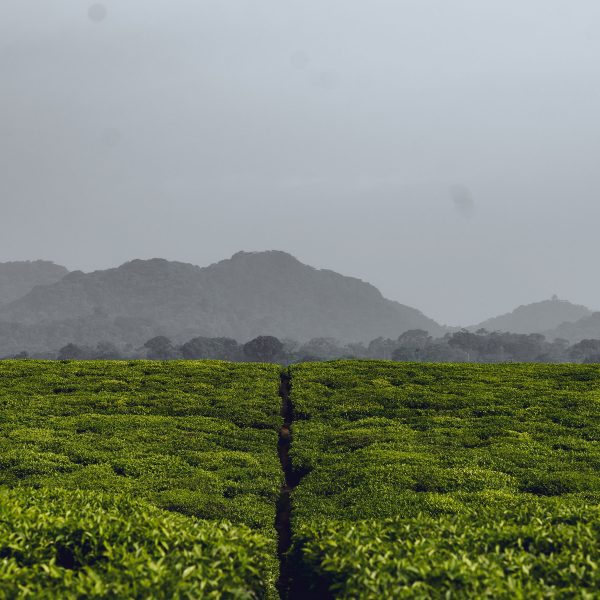
Visitors to the Gisakura Tea Plantation can participate in tea-picking activities offered by the Nyungwe Cultural Village. The tea pickers are friendly and eager to demonstrate the tea-picking process, making it an ideal activity for those seeking hands-on experience. Additionally, the Cultural Village offers a biking activity that allows visitors to ride through the tea plantation and enjoy the stunning views.
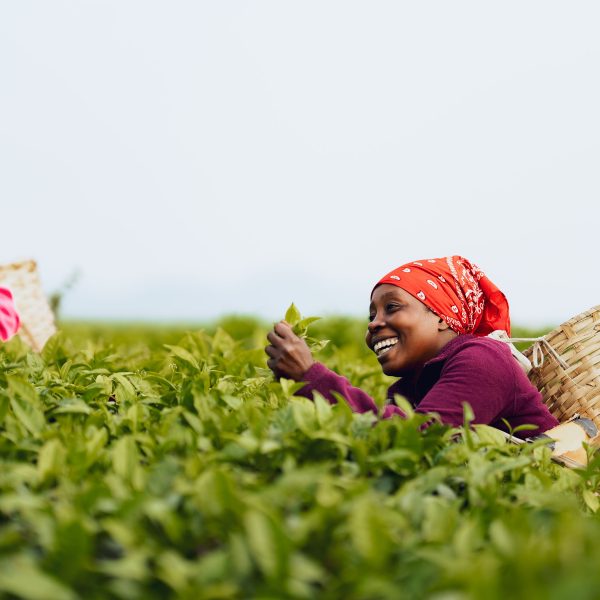
Rusizi is a destination that offers breathtaking views, fascinating wildlife, hands-on activities, and a variety of outdoor adventures. The district’s vast green landscapes ensure that visitors are always immersed in nature, leaving everyone with a story to tell.
Learn more about Rusizi at www.visitrusizi.com.

